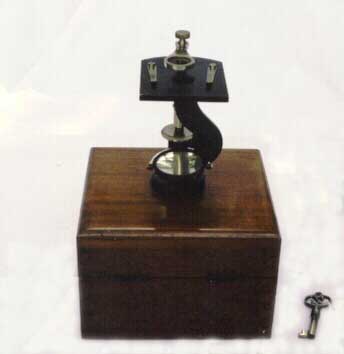 This
simple microscope was the first type produced in the Zeiss workshop in
Jena. This was when he was primarily a resource for the construction of
scientific tools and demonstration materials for the professors at the
University of Jena. Microscopes of this time were merely high powered
magnifying glasses. This model had a range of three magnifiers stored
in this hardwood (usually mahogany) box and the instrument itself unscrewed
for storage.
This
simple microscope was the first type produced in the Zeiss workshop in
Jena. This was when he was primarily a resource for the construction of
scientific tools and demonstration materials for the professors at the
University of Jena. Microscopes of this time were merely high powered
magnifying glasses. This model had a range of three magnifiers stored
in this hardwood (usually mahogany) box and the instrument itself unscrewed
for storage.
For the first 20 years of his business life, the firm made a average of 20 microscopes a year. An apprentice would work to construct each instrument from start to finish. Zeiss and his assistant, August Lober would guide their efforts from start to finish. There was no such activity as division of labor or specialty. Zeiss took great efforts to learn the skills necessary for optical work but never succeeded as well as did Lober, who was his first apprentice and who remained at Zeiss for his entire work life.
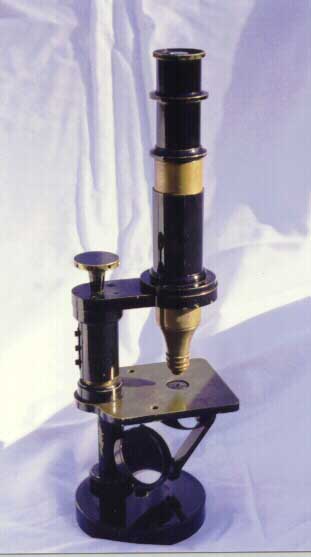
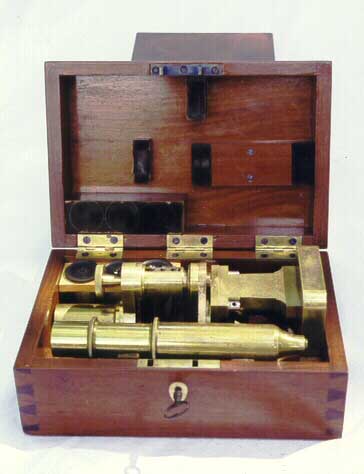 These
early microscopes were crafted as almost works of art for the scientific
customer. The customer was usually an individual for which this was a
life time investment. So the exotic hardwoods and the brass fixtures and
locked box were typical of all firms in this day.
These
early microscopes were crafted as almost works of art for the scientific
customer. The customer was usually an individual for which this was a
life time investment. So the exotic hardwoods and the brass fixtures and
locked box were typical of all firms in this day.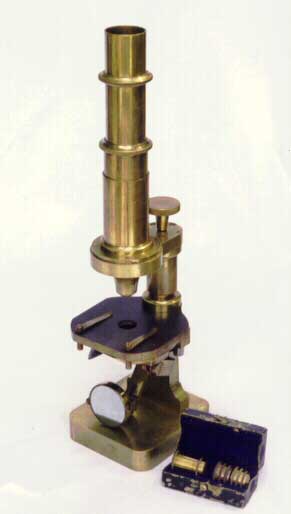 This
is the same compound stand that was in disassembled form in the illustration
immediately above. This stand was constructed in 1870. At this point all
of the microscopes made by Zeiss can be considered to be custom made since
they were made to order based on an non-illustrated catalog.
This
is the same compound stand that was in disassembled form in the illustration
immediately above. This stand was constructed in 1870. At this point all
of the microscopes made by Zeiss can be considered to be custom made since
they were made to order based on an non-illustrated catalog.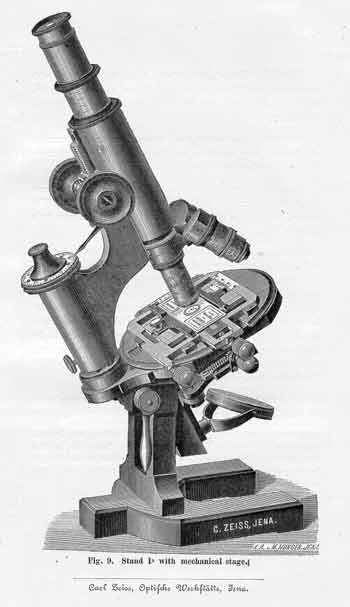 By
the early and mid-1880s, Zeiss was making a wide range of different microscopes.
It is difficult to identify all of them specifically because the model
numbers would vary from catalog to catalog. The catalogs after 1880 were
illustrated with beautiful woodcut pictures of the current models and
so models after that time can be identified more easily.
By
the early and mid-1880s, Zeiss was making a wide range of different microscopes.
It is difficult to identify all of them specifically because the model
numbers would vary from catalog to catalog. The catalogs after 1880 were
illustrated with beautiful woodcut pictures of the current models and
so models after that time can be identified more easily.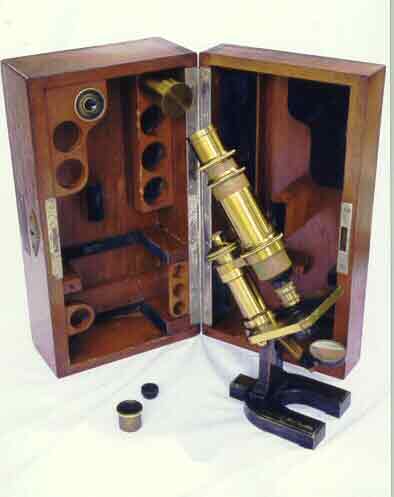 This
stand was designated with the Roman numeral VI and was very similar to
the VII with the major difference of that it could be inclined. Most microscopes
prior to 1880 used only a single lens at a time. Various rotating devices
were made to accommodate 2,3 or more objectives at the same time.
This
stand was designated with the Roman numeral VI and was very similar to
the VII with the major difference of that it could be inclined. Most microscopes
prior to 1880 used only a single lens at a time. Various rotating devices
were made to accommodate 2,3 or more objectives at the same time.